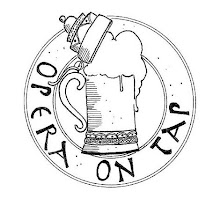In a business where decrees, diagnosis and haughty pronouncements are handed down often, it ‘s a good bet that quite a bit of this wine chatter is related to the noble yet often misunderstood grape known as Riesling. Riesling just makes sweet wine right? Nope, not really. In fact, Germany has a whole hierarchy of ripeness and sweetness written into law, ranging from totally bone dry all the way up to very sweet, making it only one of a handful of ultra-versatile grapes you could actually pair with every course of a meal. And the French and the Austrians often don’t vinify their Rieslings anything but dry. Oh, they grow that grape in Europe? Isn’t Riesling just grown domestically and in Australia and New Zealand? No again. Riesling has been cultivated on the banks of the Rhine and surrounding areas since at least Roman times.
Joining in a tasting through a box of rieslings were Ted Matern, co-owner of Blue Apron Specialty Foods in Park Slope, Michael Amendola of Brooklyn’s Slope Cellars, Evan Spingarn of David Bowler Wines and his wife Kate, and Andrea Browne of Ron Ben-Israel Cakes.
The wines in the slate were mostly German. There was much curiosity how wines of various ripeness levels would perform with different foods, so dishes and tastes were prepared to pair with this shape shifter of a grape. “The whole thing is about how the food and wine play off one another.” Michael noted. Some wines fold into the flavors of the food, some wines stand up to them.
The first wine was a sparkler, Reuter Sekt. The wine was paired with some younger cheeses like brie, and the contrast of the creamy rich cheese with the dry, racy Sekt worked. This example showed it’s lighter side when paired with older cheeses like Hirtenkasse; it just couldn’t stand up against them. This manhandling of wine by aged cheese came up again when we moved on to the dry Gobelsburger 2005 from Austria. Ted noted this wine would be great for salads or lighter fare.
Surely one of these wines would work with fish, though the perfect matches were not what some of us expected. The off dry examples seemed to work best. The 2004 Paumanok from North Fork, Long Island stood up to the lemony Bass Grenobloise, and the wine’s peachy smoothness dovetailed nicely with the browned butter. In a blind tasting, this wine might just be a dead ringer for something from the old country. “This wine’s trying to trick you!” cried Evan.
In wine and food pairing, sometimes acid will cancel out acid. To test the acid cancellation idea, Michael had brought some fresh tomatoes from his garden. “Tomatoes are revelatory for wines.” Michael said. Instead of settling down the acidity of both the tomatoes and the dry and off dry wines, the acidity was actually amplified, though in a pleasing way. The Alsatian Riesling, and a slice of fresh tomato was like a party in the mouth! Of course this was a full bodied zinger of a wine that absolutely crushed the bass. You almost need the complexity of a raw tomato to react with this Riesling. This wine showed more effectively in a classic pairing with some liverwurst and pate.
From here it got sweeter, and the food got spicier. Various elements of this tasting crew had suspicions that the conventional sweeter wine with spicy food wasn’t as effective as was believed. When the Lamb Vindaloo came out, this trend in wine and food pairing was put to the test. All but two of the wines simply vanished when showed with the vivid, eye watering spiciness of the vindaloo. Michael said he’d rather be drinking beer. The forcefully dry Alsatian bottle began to drink with an unpleasant bitterness when thrown against the Indian dish. The real winner with this plate was the Gysler, which had the zipping acidity and slight sweetness to contend with what was happening. It turned out salt and sweet was where it was at; spice and sweet was a little more challenging.
When the raspberry tart Andrea made for the event came out, it was time to test the mettle of the dessert grade Rieslings. The Rauen Eiswein was a perfect fit, the sweetness danced with the pastry cream, the matching zip got along famously with the berries.
Trying to contribute to a wholesale examination of what Jancis Robinson calls “Arguably the world’s most undervalued grape,” There was some reinforcement of what was previously held to be true, and there were some surprises.
Find the Goodies from this Article:
1. Schoffit 2002 from Alsace and dessert wines: Paumanok Gobelsburger, Rauen - Slope Cellars
2. Paumanok - Vintage New York

No comments:
Post a Comment